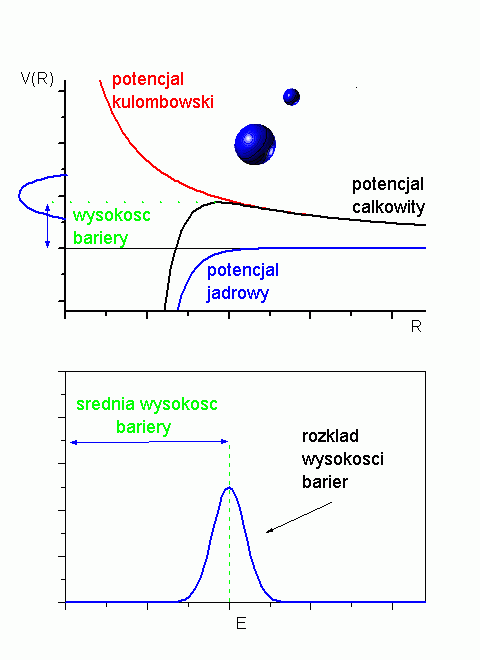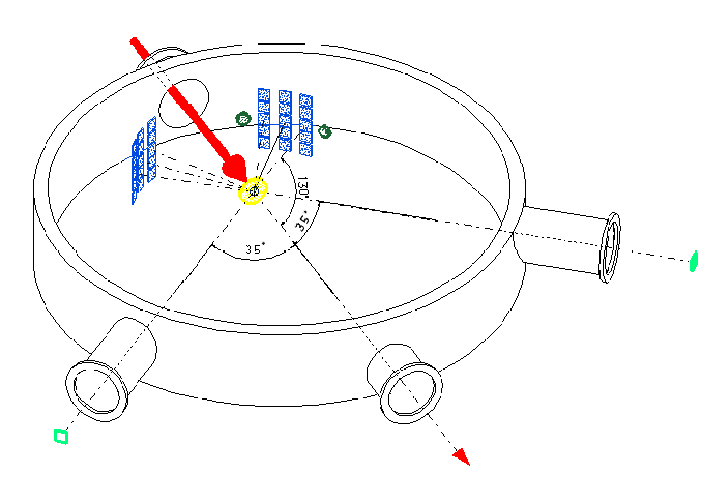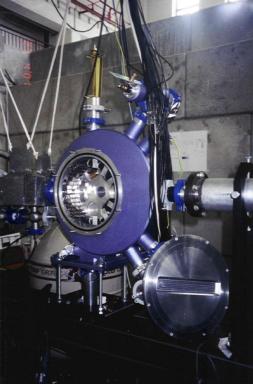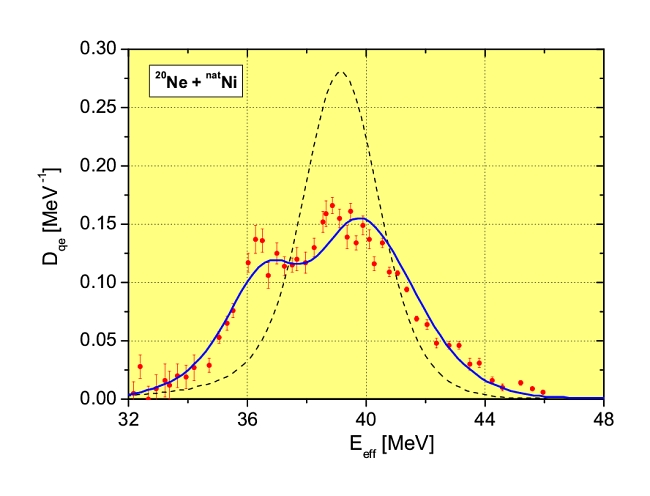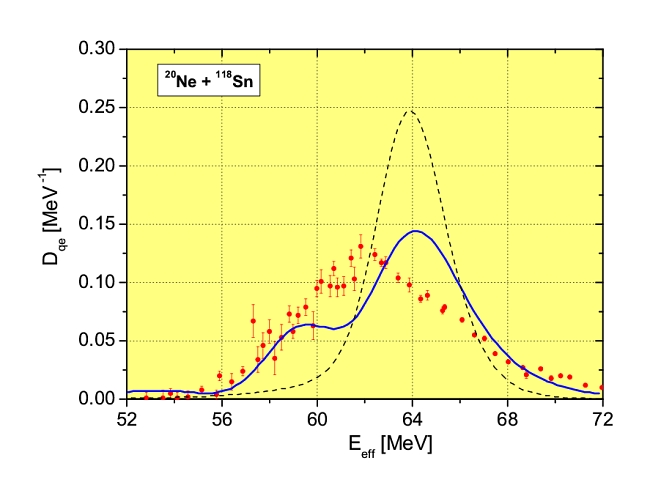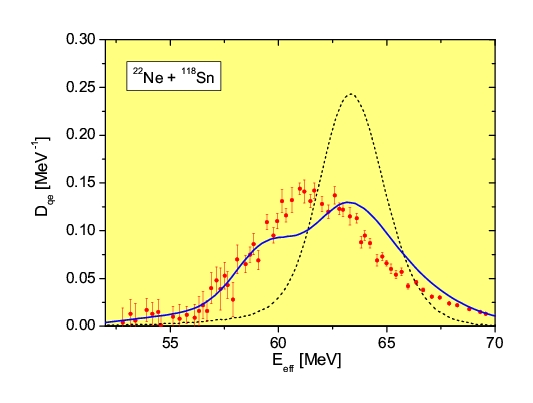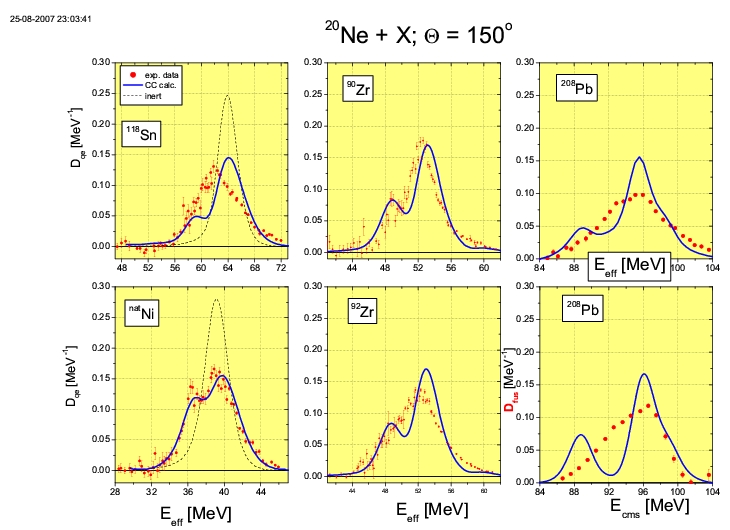Fusion Barriers Height Distributions
List of recent papers :
- E. Piasecki et al, Phys. Rev. C 100 (1) (2019) 014616
- D. Wójcik et al., Acta Phys. Pol. B 49 (2018), pp. 387-392
- A.Trzcińska et al., Acta Phys. Pol. B 49 (2018), pp. 393-397
- A.Trzcińska et al., Phys. Rev. C 93 (2016) 054604
- A.Trzcińska et al., Phys. Rev. C 92 (2015) 034619
- A.Trzcińska et al., Acta Phys. Pol. B 45 (2014) pp. 383-390
- E. Piasecki et al, Phys. Rev. C 85 (2012) 054608
- E. Piasecki et al, Phys. Rev. C 85 (2012) 054604
- A.Trzcińska et al., EPJ Web Conf. 17 (2011) 05006
- E. Piasecki et al, Phys. Rev. C 80 (2009) 054613
- E.Piasecki et al., Intl. Journ. Mod. Phys. 16 (2007) 502.
- E. Piasecki et al., Phys. Lett. B 615 (2005) 55.
- L. Swiderski et al., Int. Journ of Mod. Phys. E13 (2004) 315.
- E. Piasecki et al., Acta Phys. Pol. B 33 (2002) 397.
- E. Piasecki et al., Phys. Rev. C 65 (2002) 054611.
Contact: E. Piasecki, piasecki@fuw.edu.pl
Fusion is a process of merging two nuclei into one. To make it possible, projectile and target need to overcome a barrier for fusion, which arises due to the competition between Coulomb force, which is long-ranged and repulsive and nuclear force, which is short-ranged and attractive. The sum of Coulomb and nuclear potentials is, in the simplest approximation, the total potential, which maximum value is called barrier height.
When both nuclei – the projectile and the target – are spherical, classically we see a single barrier (of height indicated with the blue arrow), but due to quantal tunneling the barrier height is smeared and we obtain a distribution heights about 2-3 MeV wide.
If at least one of the nuclei is deformed (see figure below), the barrier height depends on the orientation of target versus projectile during the impact. Actually we have to average over all possible mutual orientations of the colliding nuclei. This is the classical interpretation of arising of the distribution of fusion barrier heights. Quantally, the distribution is generated by couplings (mutual interaction) of many reaction channels.
How to extract the distribution experimentally?
There are essentially two methods: one of them uses data from fusion cross section measurements, another one, used up to now in this laboratory, utilizes data from the backward angles quasi-elastic and forward angle Rutherford scattering. As quasi-elastic we define the sum of elastic, inelastic and transfer processes. Then the distribution is given by the following formula:
where σqe is quasi-elastic scattering cross section and σR is Rutherford cross section. So essentially, the measurements consist in registering the ratio of number of particles scattered backwards divided by number of particles scattered forward, where we observe pure Rutherford scattering.
Using this method we have extracted fusion barrier distributions in the interactions of 20,22Ne with many targets. The Barrier Collaboration involves physicists from Warsaw University (HIL and Institute of Experimental Physics), University in Bialystok, IPHC in Strasbourg, Tohoku University in Japan, Jyväskylä University (JYFL) in Finland, INFN (Catania) and Technische Hochshule (Darmstadt).
The experiments have been performed mainly at the Warsaw Cyclotron U200P. The detecting system was arranged inside the CUDAC scattering chamber. The experimental setup is extremely simple. Thirty semiconductor detectors are set at angles between 130 to 150 degrees to register backscattering and 2 detectors are set at 35 degrees to measure Rutherford scattering and beam energy. Additionally we put up to 4 E-ΔE telescopes to learn about light charged particles transfer.
Scattering chamber.
Our puzzling results
Our data for the 20Ne + natNi system were compared to coupled channels calculations performed using the CCQUEL code. The experimental distribution (red points in the figure below) agrees well with the calculated one. The calculation shows clear structure of the distribution (blue line, calculation parameters taken from other sources, experimental resolution taken into account). The black dotted curve is a result of calculation obtained assuming no couplings between reaction channels, so-called inert case.
On the other hand no set of calculation parameters lets us describe the experimental distribution for 20Ne + 118Sn which, at variance with calculated results, is completely structureless (see below).
We suspected that the smoothing of the distribution could be caused by (not taken into account in calculations) strong α-particle transfer from the 20Ne projectile to 118Sn target, so we have made the same measurements with 22Ne beam (where the transfer was expected to be much weaker), but again in the experimental distribution we failed to get any structure (see figure below). We checked experimentally that α-particle transfer and break-up are in this case very weak indeed, so these reaction channels cannot be blamed for smoothing the distribution.
Then we started to suspect that the barrier heights distribution smoothing, blurring the expected structure, could result from the neutron transfer between projectile and target. Thus we performed measurements of the distributions for 20Ne interacting with 90Zr and 92Zr targets, expecting that in the first case (due to small transfer probability) we would see the structure, while for the second target the distribution would be structureless. The expectations seem to be born out by experiments (see figure below), however we plan to repeat them.
We measured also (in JYFL) the barrier distribution for the 20Ne + 208 Pb system, using simultaneously two methods: by fusion and by quasielastic scattering, to check whether they give rise to similar results. The answer is positive, being in spectacular disagreement with theory (see below, where our results concerning the interaction of 20Ne with many targets are collected).
Thus, for the moment, one can summarize that for some systems we observe good agreement between experiment and theory, while for other ones we get significant disagreements. The reason of this remains a puzzle to solve.


